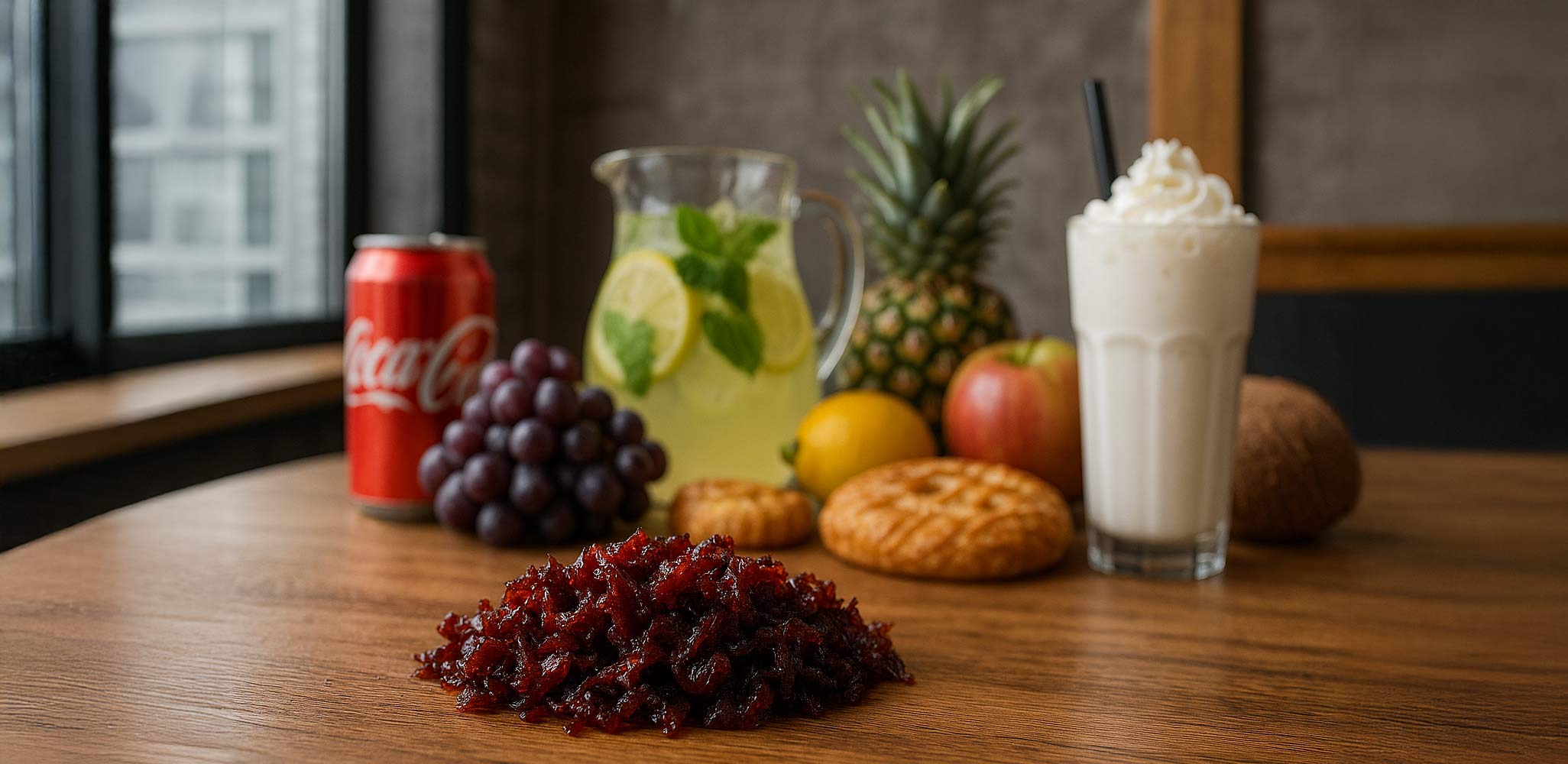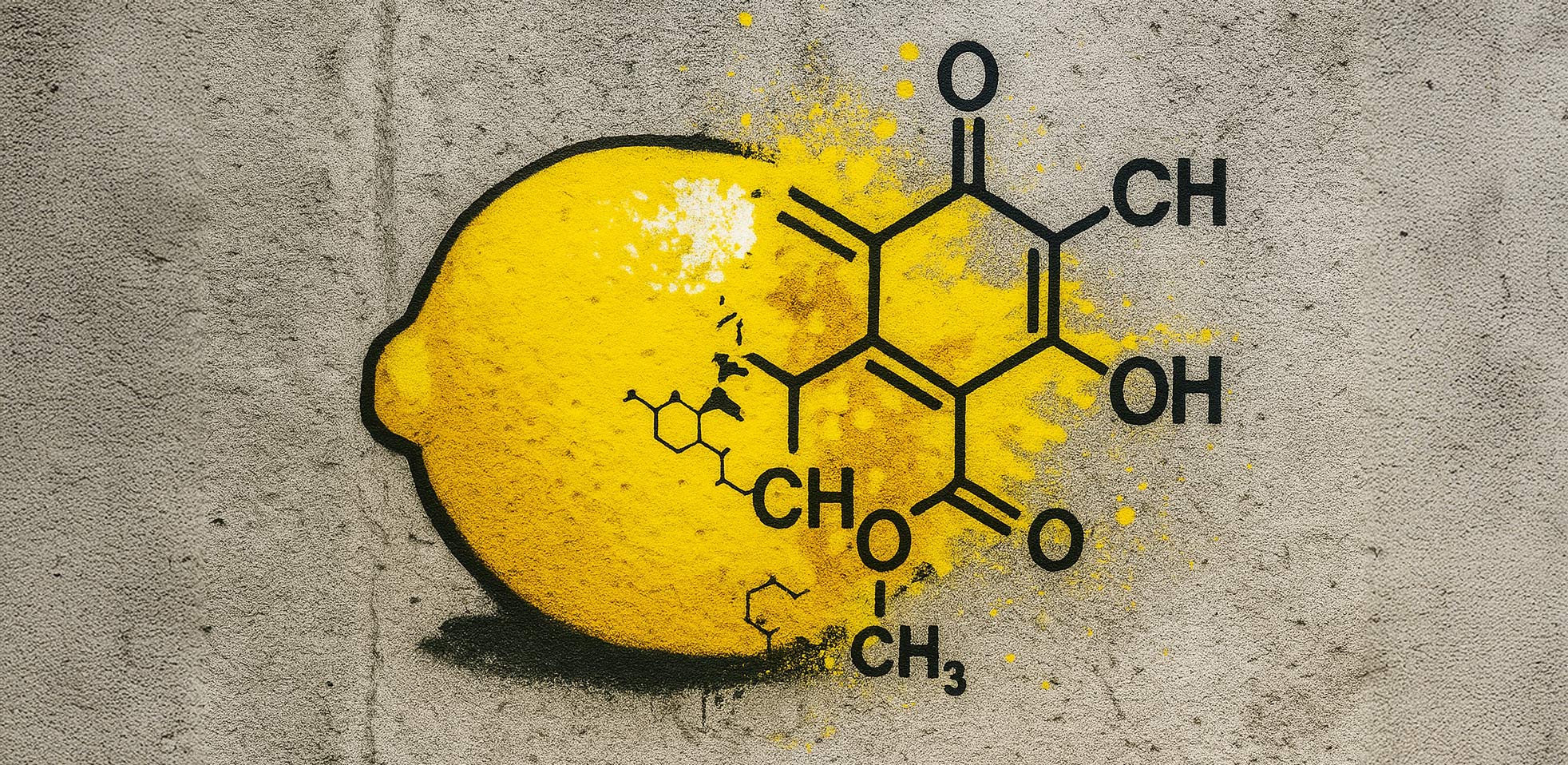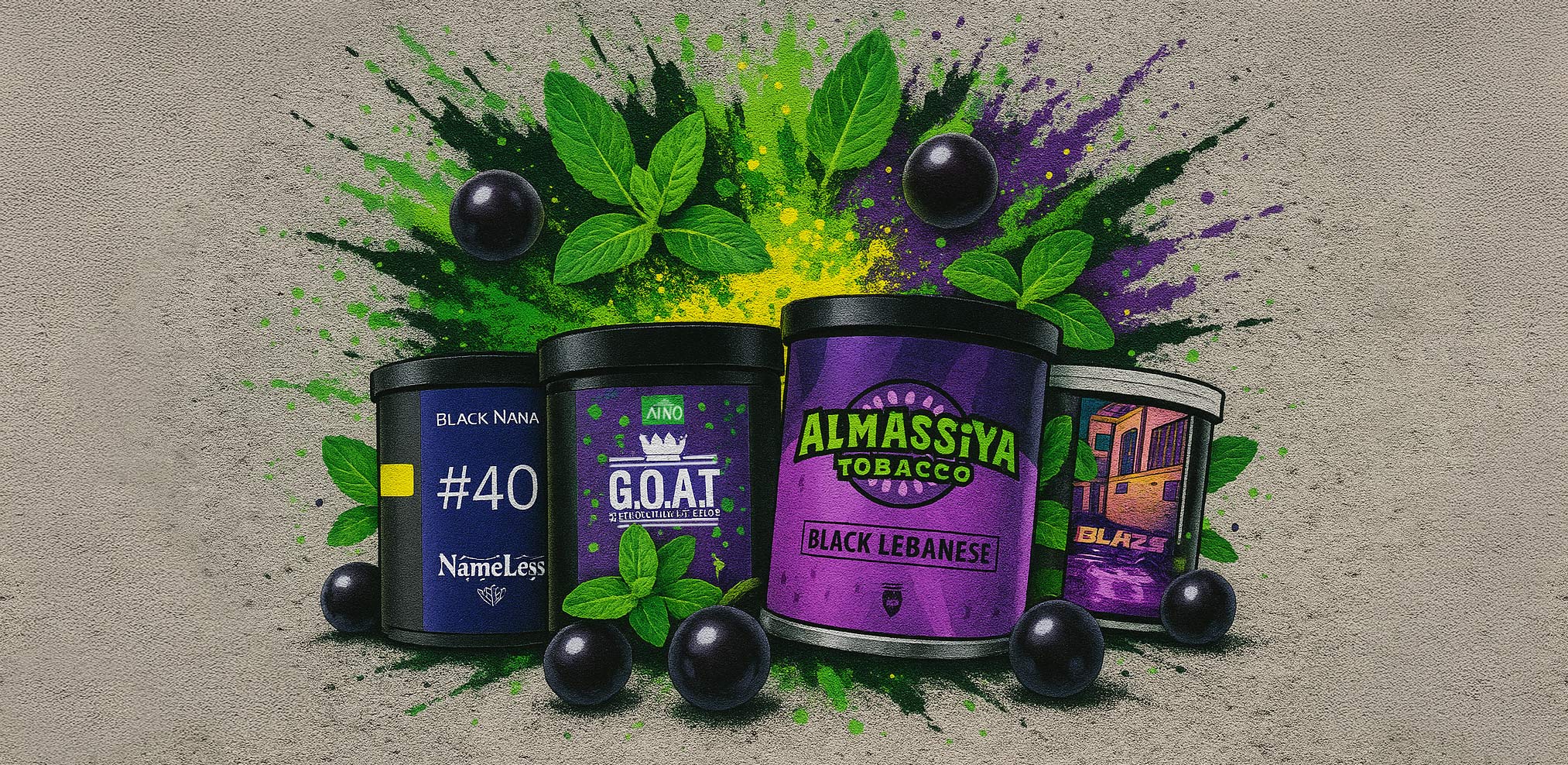-
Our offer is only for you if you are of legal age. Please confirm that you are at least 18 years old to proceed.
Our offer is only for you if you are of legal age. Please confirm that you are at least 18 years old to proceed.
Related posts
Make your own shisha tobacco – How can I produce shisha tobacco myself? Hookah tobacco types: What is the difference between Burley and Virginia? Can hookah tobacco expire? How long does shisha tobacco last? Where can I buy hookah tobacco? Best hookah tobacco 2025 Hookah tobacco mixology basicsAuthor

Last updated on 13.10.2025 | Reading time approx. 03:30 min

How does hookah tobacco actually get its flavor?
Summary: This article explains how hookah tobacco gets its flavor, how aromas are created and combined, why identical flavors can taste different depending on the manufacturer, and which flavor profiles are most popular in the community. You’ll also find tips on which flavors are best for beginners, enthusiasts, and those who like to experiment.
The world of hookah tobacco blends is loud, colorful, and incredibly diverse. Whether you’re just getting started or you’ve been smoking regularly for years, you eventually realize: hookah tobacco flavor is about more than “smoking.” It’s about memories, associations, and small moments of enjoyment that really spark something and make your hookah sessions feel special.
What you’ll find here
How does flavor get into hookah tobacco? How are flavors for hookah tobacco made? What can become a flavor? Why flavors differ between manufacturers What are the most popular hookah tobacco flavors? Which flavors suit whom? ConclusionMany of the most popular blends lean into what we perceive as sweet, refreshing, or simply pleasant. And very often, these are flavors that remind us of childhood snacks or candies we’ve known forever: sour worms, cinnamon gum, orange Tic Tacs, or menthol lozenges. Brands like Al Waha, Adalya, True Passion, Hookain, or 187 Strassenbande consciously compose their blends to trigger those exact flavor memories. The result: a hookah tobacco that feels like home.
Whether fruity, sweet, creamy, or totally offbeat — this article dives into the vibrant world of hookah flavors.
The taste of hookah tobacco comes from flavors added to the tobacco. These are part of the molasses but only make up a small fraction of it. The largest share of a molasses is glycerin, followed by sweeteners such as honey or glucose.
Glycerin intensifies flavors and creates dense, satisfying smoke.
The tobacco itself (the smoking base) is fairly neutral or has its own underlying tobacco note. Most manufacturers here use Virginia tobacco, but there are also some Burley-focused brands. Burley is a bit more robust and stronger by nature, which makes processing more demanding.
The flavoring substances are blended into a mixture of tobacco plus sweeteners and humectants. When heated with natural charcoal or electric solutions like the XKAH Pro, they’re released and create the flavor we mostly perceive through our sense of smell.
Flavors can be produced in several ways:

Among other methods, flavors are obtained from natural raw materials.
Extraction isolates flavor compounds from plant or animal materials using solvents or techniques like cold pressing. For citrus fruits, pressing the peels is common, while herbs and spices often rely on solvent-based methods. It’s a gentle process that targets specific aromatic components.
Distillation uses heat to separate volatile flavor compounds from other constituents. A classic example is steam distillation used for essential oils. Through evaporation and condensation, you get pure, concentrated flavor compounds used in foods, beverages, and perfumes.
In fermentation, flavors arise from the microbial breakdown of organic substances. Bacteria, yeasts, or molds convert starting materials into complex flavor profiles. Typical examples include cheese, chocolate, or soy sauce. Fermentation is especially versatile because it can create new as well as intensified flavors.
Note: Natural flavors don’t have to come from the raw material they ultimately taste like. For instance, vanilla flavor can be produced by fermenting certain microorganisms without using actual vanilla pods. Strawberry flavors often don’t come directly from strawberries either — they may be derived from other fruits or plants like apples or woods via fermentation or extraction. The key is that flavor compounds are produced through natural processes like extraction, distillation, or fermentation. This means natural flavors can be made from very different starting materials, even if they don’t obviously relate to the final taste.
Manufacturers choose methods based on cost, availability, desired intensity, and legal requirements. In most cases, the flavor compounds come from the food industry (natural and/or nature-identical flavors).
The carrier also matters (e.g., how well the flavor dissolves in molasses or the tobacco base).
In principle, almost any smell or taste can be recreated. The more intense it is, the easier it is to reproduce. In practice, flavor directions almost always consist of many individual flavorings that, in turn, consist of different components and together form a flavor profile:
Flavors can also be modulated by blending with other flavors. It’s a bit like wine: each grape variety is different, but the region, climate, and vintage also shape the taste. The same applies to other natural products. Take apples, for example. Every variety tastes different — a “Granny Smith” has a very different profile than a “Golden Delicious.”
That’s why there are so many ways to combine flavors to mimic specific facets of a fruit category.
Interestingly, when mixing certain flavors, some aspects can suppress or mute each other — so the components in a blend must be combined carefully.

Same profile, different flavors — the scene’s most popular taste.
If you smoke “Grape Mint” from Brand A and the same combo from Brand B, the difference can be huge. Reasons include:
Some brands disclose which fruit varieties and which flavor houses they use, but most keep that information under wraps.
Now for the fun part: which flavors are trending in the scene right now? The hookah tobacco market follows trends — one year it’s prickly pear everywhere, then guava, then blackberry, and so on. The scene constantly evolves, and new blends bring both variety and fresh inspiration.
There are, however, some general tendencies seen across classics like O’s Tobacco, Social Smoke, Al Fakher, Aqua Mentha, Holster, and newer names like stral, Revolution Tobacco, Hookahsqueeze, Maridan, and Blackburn:
If you want to learn how different hookah tobacco blends are combined into a perfectly harmonious mix, check out our blog post: Hookah Tobacco Mixology Basics.
For that, we have a blog post on the topic: Best Hookah Tobacco 2025, and you can also subscribe to our free newsletter.
On social media, the hookah community is great for discussion, recommendations, and discovering trends and new brands. Always keep in mind: everyone has their own preferences — from sweet & fruity to herbaceous & spicy.
The range of flavors is enormous — and no wonder. Hookah tobacco is a full-sensory experience, and even when multiple brands attempt the same profile, the end result is always something unique.
Next time you smoke Black Nana by Nameless, try to pick out exactly what makes it special — and compare it with another brand’s “Grape Mint,” such as Blaze Black Namik, AINO G.O.A.T., or Al Massiva Black Lebanese.
In the end, only one thing matters: that you enjoy it — whether fruit-forward, floral, or even playful “fun” profiles like bacon.
Looking for inspiration? In our online shop you’ll find a huge selection of hookah tobacco as well as more hookah accessories — perfect for your next hookah session.
Have fun trying, combining, and savoring — and as always: enjoy your smoke!
Your Moze Team
Hookah tobacco typically keeps for several months if stored airtight and cool. After opening, it should ideally be used within 6 months, though flavor and moisture can begin to decline after 2–3 months. Especially with popular blends, it’s smart to open only what you’ll use soon.
Fruity blends with a lighter nicotine content are great for beginners — for example, watermelon, peach, or grape mint. They’re mild, easy to smoke, and not overwhelming. Many newcomers start with well-known brands because they offer consistent quality and a wide variety of flavors.
Yes, there are nicotine-free alternatives to tobacco, such as Hookahsqueeze (pastes) or Smoke Island (cellulose-based tobacco substitutes). These contain no tobacco and therefore no nicotine, yet still deliver full flavor and satisfying smoke production.
Absolutely! Many hookah fans create their own blends — e.g., berry mix with mint or lemonade with citrus. The key is that the flavors complement rather than overwhelm each other.
That depends heavily on the brand and the specific blend. Brands like Social Smoke, Hookain, or 187 Strassenbande are known for bold, powerful flavors. If you want even more punch, try dark blends — they usually have higher nicotine content and a more robust flavor.
The selection is huge: fruits like watermelon, pear, lime, honeydew, passion fruit, peach, apricot, tangerine, blueberry, mulberry, melon, strawberry, mango, raspberry, lemon, cherry, and grapefruit — there’s practically nothing that doesn’t exist. Citrus fruits, grape, and exotic fruits that are sweet, tart, or zesty are especially popular.
Related posts
Make your own shisha tobacco – How can I produce shisha tobacco myself? Hookah tobacco types: What is the difference between Burley and Virginia? Can hookah tobacco expire? How long does shisha tobacco last? Where can I buy hookah tobacco? Best hookah tobacco 2025 Hookah tobacco mixology basicsAuthor

